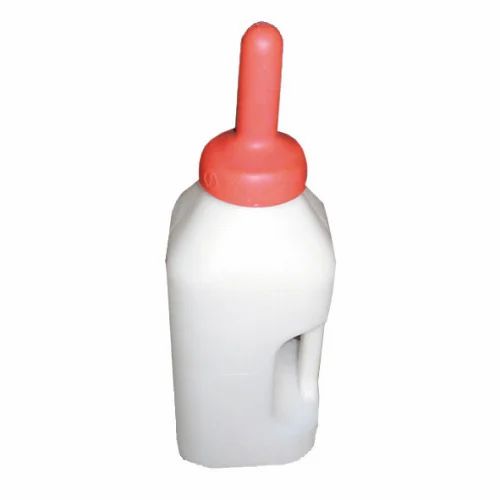Baby food dairy
Dairy for Baby - Introducing Milk, Yogurt, Cheese for Baby. Frequently Asked Questions about giving babies Dairy
Commonly Asked Questions about Offering Dairy, like Yogurt and Cheese, to Your Baby
Many parents wonder when they can offer their babies dairy products such as yogurt and cheese. Some common questions are: “Should I give my baby full fat dairy products?” and “Can I use milk in recipes that my baby will be eating?”
On this page you will find a compiled a list of common questions and answers concerning giving your baby yogurt and cheese and dairy products in general.
If you do not see your question here, please contact us. If we cannot answer your question about offering your baby dairy products, we will point you in the direction of someone who may. We are always eager to add information to this site. The more information that we have based on your questions, the more informed our visitors will be.
Homemade Baby Food – Dairy FAQs
Why can I introduce Yogurt earlier than 12 months?
Yogurt may be introduced as early as 6 months old, (the typical age recommendation is 8 months old) depending on your baby’s pediatrician and your baby’s propensity to allergies.
Here are 2 reasons why introducing Yogurt (and cheese) is different than introducing milk:
- Unlike a Whole Cow Milk beverage, your baby is not at risk of formula/breast milk being replaced by Yogurt or Cheese. The medical community worries that if Whole Cow milk is introduced to an infant prior to 1 year old, that parents would stop formula and/or breastfeeding and use Milk as the replacement. This would be dangerous to your baby’s health.
- Lactose is already broken down with the culturing of the yogurt or cheese and milk proteins are either removed or limited thus it is typically easier to digest; people with lactose intolerance often are be able to handle cheese and/or yogurt without trouble. The same is true for some people with a milk protein (either to the casein or the whey) allergy.
Yogurt is a great way for baby to get calcium and the “bacteria” in yogurt that is so good for our digestive systems. Yogurt is also a great way for baby to get the fat that is so highly needed during baby’s first year.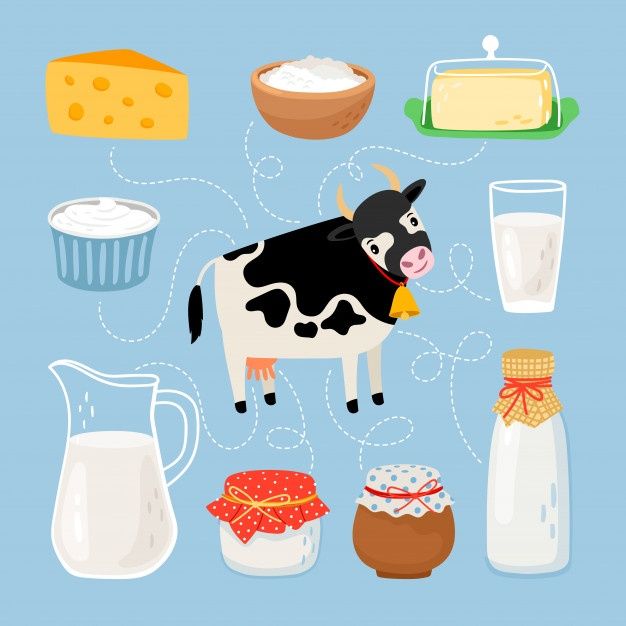 The majority of yogurts on the market are made low fat or non fat but babies need the fat!
The majority of yogurts on the market are made low fat or non fat but babies need the fat!
Can I Use Milk in Recipes?
Using milk in a baked good recipe, like offering yogurt and cheese, will not risk weaning your baby to milk from formula and/or breast milk. Milk in a baked good, or otherwise cooked recipe is considered safe for the baby who is 7-8 months of age+ and who has no familial history of dairy allergies.
When Can I Introduce Cheese to my Baby?
Cheese is very good for baby and may be introduced as early as 8 months providing there are no dairy allergies; start by offering the lighter tasting cheeses (Colby, Jack, American).
If baby cannot mash/grasp, melt cheeses over vegetables or add to veggie/meat purees. If baby can mash/grasp and has had Baby Finger Foods, cut cheeses into small bits and offer to baby as a snack.
Cheeses also may be offered via the old classic grilled cheese sandwich or mac-n-cheese – again, this will be dependant on how baby is with mashing/grasping other foods.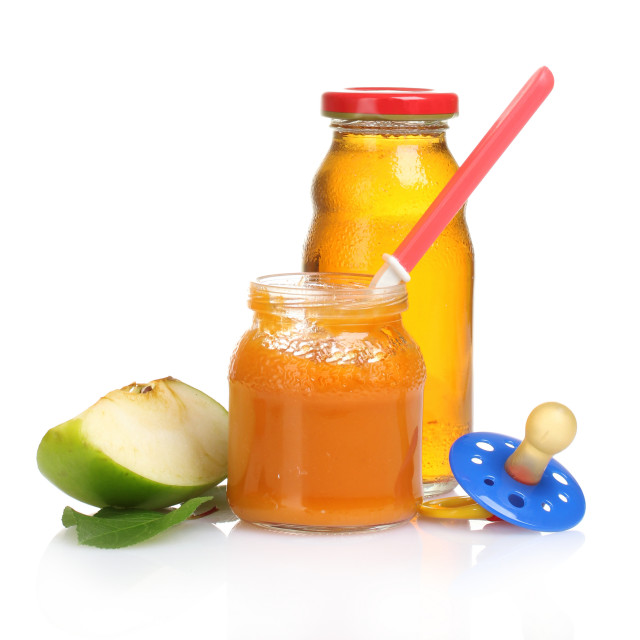
Learn more about Feeding Cheese to Baby
Why Should I Wait Until After 12 Months to Introduce Milk as a Drink?
One of the main reasons you should wait until after baby is 1 year old to introduce milk as a formula/breast milk replacement is that milk/dairy hinders the absorption of iron in the body. Milk is also much harder for baby to digest than breast milk or infant formula.
Milk by itself does not contain all the nutrients of breast milk or formula and should never be used as a substitute until after 1 year of age. The cooking of the food that contains the milk will aid in breaking down the milk proteins so that many babies who are 8 months+ are able to have baked goods that contain milk.
As noted on our solid food chart for the 4-6 month old baby, we indicate that dairy should not replace breast milk or formula until a baby is 12 months of age. There is a possibility of serious health risks should breast milk and/or formula be replaced with cow milk, particularly at the 4-6 month age range.
These risks include Iron Deficient Anemia. Cow milk hinders the absorption of Iron and can cause anemia. Iron is crucial for baby’s healthy development. Besides the risk of iron deficient anemia, if your baby drinks cow milk to replace breast milk and/or formula, baby will not receive enough Vitamin E or enough EFAs (essential fatty acids). These nutrients are also crucial to healthy growth and development.
Your baby would also receive levels of protein and sodium that would be too high for baby’s fragile system to handle. Cow milk protein is very difficult for an infant to digest and absorb. While formula may be cow milk based, the proteins are “pre-digested” and cultured in a way that make baby’s tummy better able to tolerate them. Believe it or not, the levels of sodium (and potassium) in cow milk are very high. Too much sodium might cause an infant’s kidneys to fail and as we know, high levels of sodium can lead to high blood pressure.
These are a few of the reasons why the AAP and other pediatric authorities do not want babies to drink milk as a replacement until 12 months of age. As you know, breast milk is the most perfect food for infants and babies could survive on breast milk alone for the first 12 months. Formula, while not nature’s perfect food like breast milk, has been created with the crucial and essential nutrients that an infant needs to grow healthy and maintain a proper nutritional status. Whole cow milk does not provide for the good health and growth of babies.
As you know, breast milk is the most perfect food for infants and babies could survive on breast milk alone for the first 12 months. Formula, while not nature’s perfect food like breast milk, has been created with the crucial and essential nutrients that an infant needs to grow healthy and maintain a proper nutritional status. Whole cow milk does not provide for the good health and growth of babies.
What About Dairy Allergies?
If you, your family members or your baby have a history of allergies to milk (to the milk protein) and/or a history of lactose intolerance; introducing dairy in any form prior to 1 year is probably not a good idea.
As most babies can outgrow these types of allergies, if you hold off until after 1 yr, the risk of developing these allergies is significantly decreased.
Also note that an infant who has a true allergy to the milk protein(s) may also have allergies to other foods – soy being one of the most common. Learn more about Dairy Allergies and other Allergy information
Delaying the introduction of cow milk or other food products may not be favorable in preventing the development of atopy. A study in 2008 (Dairy Introduction past 9 months ) showed that more delay in introduction of cow milk products was associated with a higher risk for eczema.
A study in 2008 (Dairy Introduction past 9 months ) showed that more delay in introduction of cow milk products was associated with a higher risk for eczema.
Are You Sure Baby Should Have Full-Fat Dairy Products?
Your baby needs fats. One of the reasons why formula and breast milk are so nutritious is due to the high fat content. Fat and fatty acids are essential for brain development to name one reason.
DO NOT GIVE baby 2%, 1% or low fat dairy products until after 2 years old unless you are otherwise instructed by your baby’s doctor.
Some doctors recommend waiting to give lower fat dairy products until after the baby has turned 3 years old.
For more information about Diary products, click below:
Yogurt & Your Baby – In depth Information about giving your baby yogurt.
Learn About Updated Lactose Intolerance Statements from the AAP
Feeding Cheese to Your Baby – Read about Cheese for Your Baby – Ideas
Remember, always consult with your pediatrician regarding introducing solid foods to your baby and specifically discuss any foods that may pose allergy risks for your baby.
This site complies with the HONcode standard for trustworthy health information:
verify here.
SHARE ON FACEBOOK SHARE ON PINTEREST
Dairy for Babies: What's Safe and How to Serve It
When I was a mom just starting solids with my baby I was very confused by the rules around dairy. It was clear that my little one wasn’t supposed to drink cow’s milk–only breastmilk or formula. But, on the other hand, there was yogurt marketed towards babies. And what about cheese? Or if I gave my baby a few bites of pancake made with milk, was that okay? If you have ever wondered–can babies can have dairy?–here’s the scoop!
The part about drinking cow’s milk (or goat’s milk or any other milk) is correct. Before age 1, breastmilk or formula should be a baby’s primary beverage. Cow’s milk is hard for a baby to digest and may fill him up too quickly, taking up the tummy space needed for other foods. Plus, breastmilk and formula were created especially for babies’ nutrient needs. Once your baby has turned 1, continue to breastfeed if you’d like and/or introduce full-fat cow’s milk. There’s no need to continue formula after age 1. (And unless your pediatrician recommends it, skip those toddler formulas. They’re expensive, often made with added sugars, and offer little, if any, benefit to normally-growing children.)
Once your baby has turned 1, continue to breastfeed if you’d like and/or introduce full-fat cow’s milk. There’s no need to continue formula after age 1. (And unless your pediatrician recommends it, skip those toddler formulas. They’re expensive, often made with added sugars, and offer little, if any, benefit to normally-growing children.)
So no drinking cow’s milk, but the good news is that yogurt and cheese are stellar baby foods. They provide protein, important fats for your baby’s development, and crucial minerals like calcium. Here’s how to serve them.
Yogurt
Choose full-fat, plain yogurt, either regular or Greek-style/Icelandic. Neither total fat nor saturated fat should be restricted when your baby is under one year old. These fats are important to help your baby feel full, for vitamin absorption, and for brain development. Pick plain because flavored yogurts have a lot of added sugars, which we want to avoid for babies. (All yogurts have some natural milk sugars, but you don’t need to worry about those. ) You can always flavor the yogurt yourself. My favorite brands include Siggi’s, Maple Hill, and Wallaby, but use whichever your family prefers!
) You can always flavor the yogurt yourself. My favorite brands include Siggi’s, Maple Hill, and Wallaby, but use whichever your family prefers!
Here are some easy ways to serve yogurt to your baby:
- Mix with fruit or vegetable puree for spoon-feeding or self-feeding with a pre-loaded spoon
- Blend it into a smoothie
- Blend it into a smoothie and freeze into a pop–see the recipe below!
- Spread onto toast sticks
- Stir into hummus or another dip
- Smash with hard-cooked eggs for an easy egg salad
Cheese
While cheese can be quite salty, if you offer it in limited quantities it can introduce a new flavor to your baby and make whatever she’s eating taste even better! Let your baby in on the joys of cheese early with one of these simple ideas:
- Grate a semi-firm cheese like cheddar and offer it to your baby for self-feeding
- Stir a bit of grated Parmesan cheese into a vegetable or meat puree
- Spread cream cheese or goat cheese onto toast sticks
- Make a grilled cheese sandwich and cut into small pieces
- Top pasta with a sprinkle of finely grated mozzarella
- Add grated Parm to meatballs before baking
- Add a dollop of ricotta cheese or creme fraiche to eggs when scrambling or making an omelet
It’s also okay to use cow’s milk in baking for your baby. Those pancakes I wanted to give my babe? Totally fine.
Those pancakes I wanted to give my babe? Totally fine.
One note: dairy is one of the top eight allergens. If your baby eats dairy and exhibits mild symptoms such as hives, redness of the skin around the eyes, vomiting, or diarrhea, speak with your pediatrician. Should your baby ever experience severe allergy symptoms, including swelling of the lips, difficulty swallowing, or shortness of breath, call 911 or go to the emergency room. You’re all set if your baby already drinks and tolerates traditional formula, since most formulas are derived from dairy.
Fruity Pops Recipe
Here’s a dairy-rich recipe you could try from my cookbook Baby-Led Feeding that’s perfect for a hot summer day or for babies who are teething. When peaches are out of season I prefer using partially defrosted frozen peach slices instead of the rock-hard supermarket options.
1/2 cup finely chopped peaches
1/2 cup raspberries
1/2 cup plain full-fat Greek yogurt
Place all the ingredients in a medium bowl and mash with a fork or potato masher. Stir to combine evenly. Transfer the mixture to ice pop molds and freeze until solid, about 2 hours.
Stir to combine evenly. Transfer the mixture to ice pop molds and freeze until solid, about 2 hours.
Love these adorable ice pop molds? Me too! Find them here.
Do you have other ideas for serving dairy for babies? I’d love to hear!
Want more family-friendly recipes and feeding tips? Subscribe to my newsletter. I’ll send you three family-friendly smoothie recipes as a thank-you!
Ice pops photo by Lauren Volo
Jenna Helwig
[email protected]Baby food - 7 dairy products for small children
Milk and milk porridges, cottage cheese, kefir and sourdough, fruit yoghurts and curd desserts are all an important part of a child's diet. After all, milk is one of the main sources of calcium and many vital elements. And if up to 6 months of age it is recommended to feed children exclusively with breast milk, then, starting from the seventh month of life, products based on cow's milk can be introduced into the diet.
Read also: What to feed a child from the age of three - general recommendations
How to choose products for the little ones
Every mother knows that her child is unique. To understand whether a particular product is suitable for a baby, you need to try this product and see how the baby reacts to it. Experienced mothers know that what suits one child may not suit another.
At the same time, there are some general recommendations on how to choose the right products for the little ones:
- Buy only "baby" dairy products that meet the needs of young children.
- When choosing products, be sure to consider the recommendations of your pediatrician.
- Choose baby food manufacturers that have the right to export products to the EU - this indicates a high quality and safety level.
- The label must state “no colorants, no preservatives, no GMOs”, for yoghurts and curd spreads “no sucrose”.
- When choosing cereals, keep in mind that gluten-rich cereals (oatmeal, semolina) should be given to a small child with great care - gluten can cause intestinal problems.
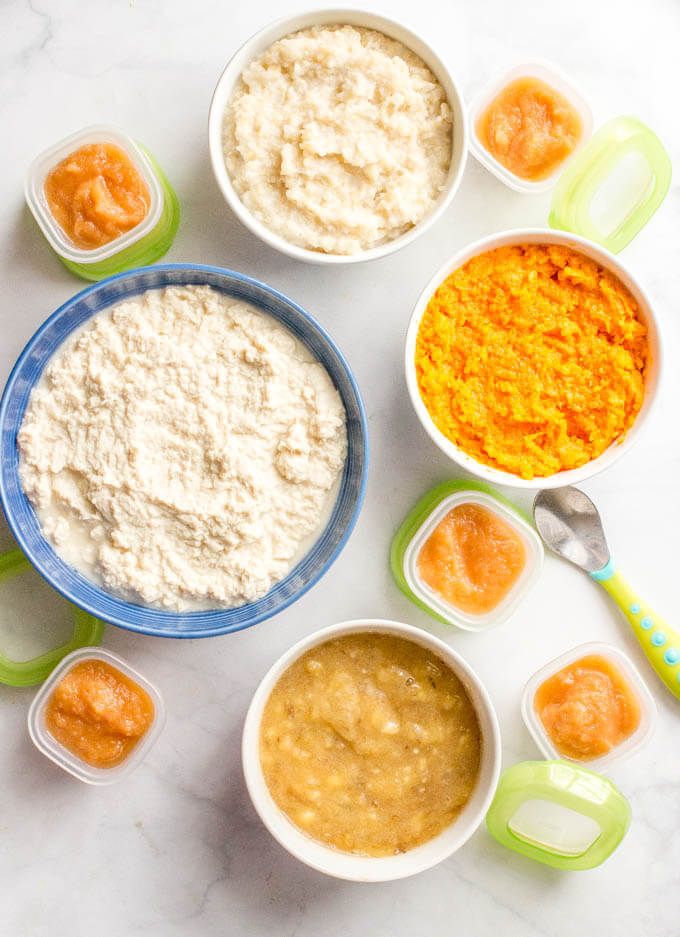
- Introduce new foods one at a time and give your child a small portion first to see how he perceives this or that product.
- Be sure to check the expiration date, storage conditions and package integrity. As a general rule, baby food should be consumed immediately after opening.
- Never buy milk in the market - it can be a source of harmful bacteria. For young children, it is recommended to give ultra-pasteurized milk of "children's" brands.
Products for the little ones
Today you can find anything on the supermarket shelves: yoghurts, cheeses, curd desserts with vanilla and fruit fillings, milk porridges, fermented milk products adapted to the needs of the child's body, and much, much more. In this article, we offer you a selection of products for children from 6 months and older.
1. Milk porridge - from 6 months
Ready-made milk porridge can be introduced into the baby's diet from the age of six months.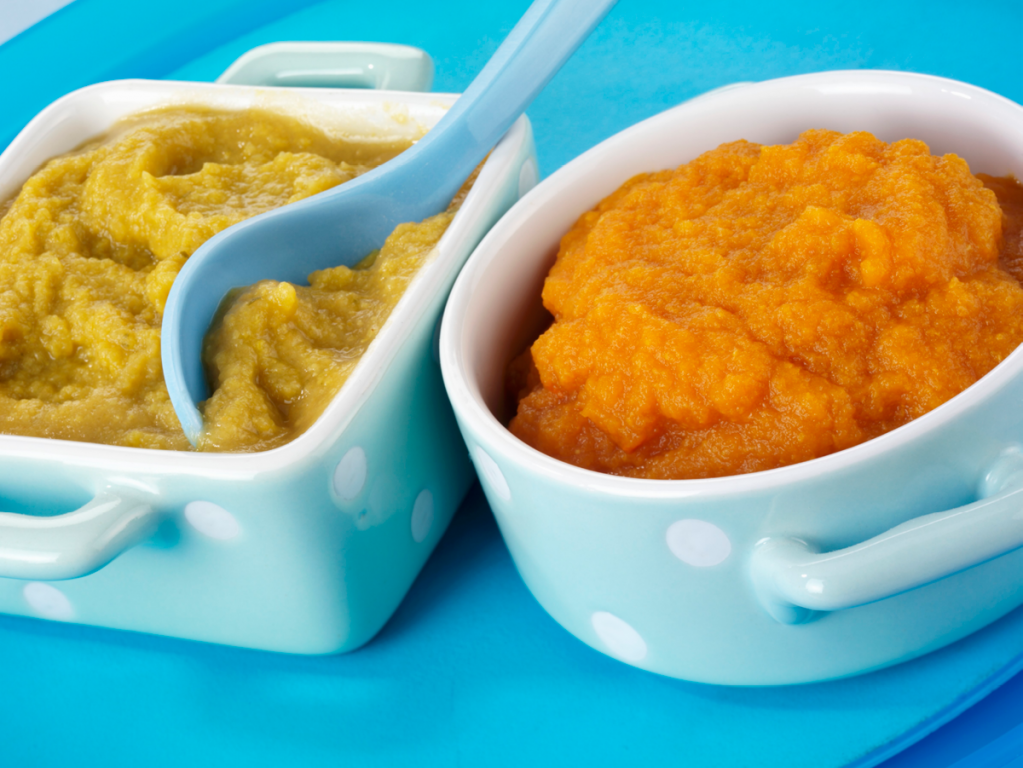 Milk porridges are prepared with the addition of fructose (without sugar) and are available in convenient packaging. The advantage of ready-made milk porridges is that they do not need to be cooked - just open and give to the child. Remember that gluten-rich cereals (oatmeal, semolina) should be given to a small child with great care, as gluten can cause intestinal problems.
Milk porridges are prepared with the addition of fructose (without sugar) and are available in convenient packaging. The advantage of ready-made milk porridges is that they do not need to be cooked - just open and give to the child. Remember that gluten-rich cereals (oatmeal, semolina) should be given to a small child with great care, as gluten can cause intestinal problems.
2. Banana curd spread - from 6 months
Unlike yoghurt, which can be given no earlier than eight months, baby curd spreads and baby curd can be given from six months. TM "Yagotynske for Children" produces cheese spreads for children with blueberry, peach, raspberry-red currant, apple and banana fillings. In 2014, cottage cheese paste with banana TM "Yagotynske for Children" was included in the list of 100 best goods of Ukraine. You can read consumer reviews about the brand's cottage cheese paste on the website otzovik.com.
3. Yoghurt “banana-pumpkin” – starting from 8 months
It is recommended to prepare yogurt and cottage cheese desserts for children with the addition of fruits and vegetables “native” to Ukraine, and in this case a banana is an exception to the general rule .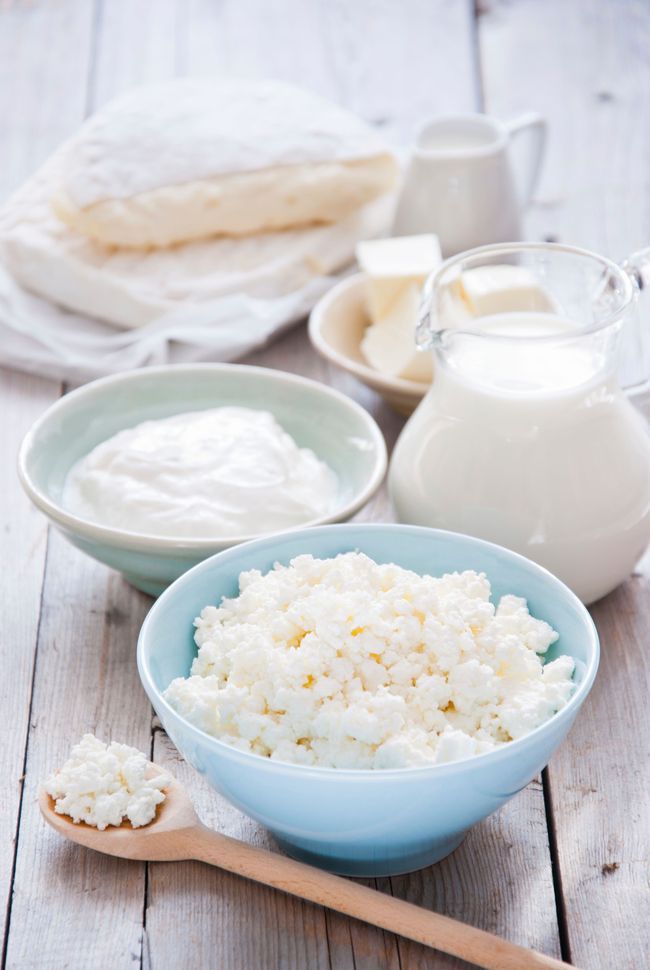 The fact is that a banana is one of those fruits that kids like and do not cause allergies in them. Pumpkin, in turn, is a source of many useful substances and normalizes bowel function. Baby yoghurts can be given to children from 8 months.
The fact is that a banana is one of those fruits that kids like and do not cause allergies in them. Pumpkin, in turn, is a source of many useful substances and normalizes bowel function. Baby yoghurts can be given to children from 8 months.
In 2013, yogurt "Banana-pumpkin" TM "Yagotynske for children" was included in the list of 100 best goods of Ukraine. TM Yagotynske for Children produces yogurts for children with banana-pumpkin, raspberry-rosehip, apple-carrot and peach fillings.
4. Baby kefir - starting from 8 months
Little children should be given kefir only of special "children's" brands - "adult" kefir is not suitable for a child, as it can cause problems with the intestines. Kefir TM "Yagotynske for Children" is made on the basis of high-quality certified milk and the best starter cultures produced in Denmark. In addition, "children's" yogurt is enriched with vitamins necessary for the child's body.
5. Starter - starting from 8 months
Starter - starting from 8 months
Many people confuse kefir and starter, which is not entirely true. Compared to kefir, sourdough has a different set of beneficial lactic acid microorganisms that provide a more viscous texture and mild flavor. In addition, the sourdough is more resistant to temperature rise and better preserved. In 2014, children's "Zakvasochka" TM "Yagotynske for Children" was included in the list of 100 best goods of Ukraine.
6. Milk - from 9 months
From the age of 9 months, children can be given UHT milk of special baby brands. TM "Yagotynske for Children" produces milk for children in convenient and safe packaging "Tetra Pak", which allows you to keep milk fresh for up to 90 days, or in a children's glass bottle with a special protective film. You can read consumer reviews of baby milk at otzovik.com.
7. Cheese with vanilla - from 3 years old
For older children, the Yagotinsky Butter Plant has produced vanillin-flavored cheese in a convenient plastic cup.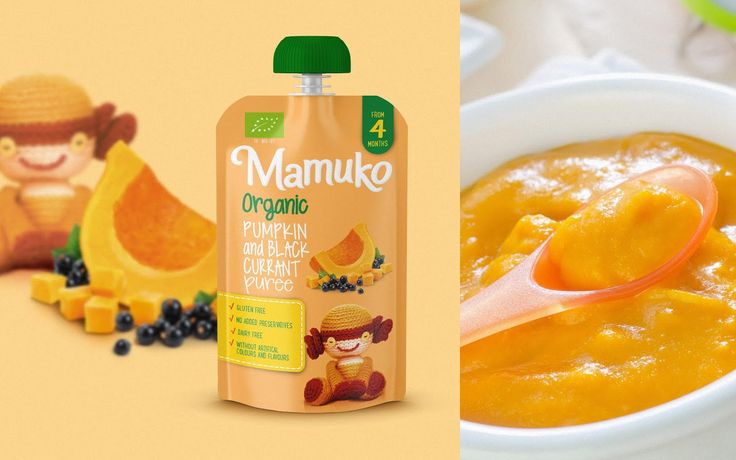 Cheese is a source of calcium and trace elements, so necessary for the child's body. The product is made only from natural cow's milk, does not contain vegetable fats and preservatives.
Cheese is a source of calcium and trace elements, so necessary for the child's body. The product is made only from natural cow's milk, does not contain vegetable fats and preservatives.
What dairy products do you give to your children?
Powdered dairy products for children and diet food
Category: Milk and dairy products
The range of dry dairy products for children and diet food includes more than 25 items.
Dairy baby food products are classified into groups, first of all, depending on the intended purpose, into subgroups - on the age and state of health of children, according to technology.
For merchandising, it is advisable to classify dairy products for children and diet food into the following main groups: liquid and pasty, dry and dry adapted.
Powdered milk formulas are produced on a milk basis for healthy children under one year old: "Solnyshko", "Vitalakt", "Ladushka", "Malyutka", "Kid", "Detolakt", etc. For healthy children of preschool age, they are produced mostly liquid sterilized products. Powdered milk mixtures "Novolakt MM", "Fitalact", "Enpity", dry low-lactose and lactose-free mixtures, etc. other components.
For healthy children of preschool age, they are produced mostly liquid sterilized products. Powdered milk mixtures "Novolakt MM", "Fitalact", "Enpity", dry low-lactose and lactose-free mixtures, etc. other components.
For children under one year old, reduce the mass fraction of protein by 2-3 times. Linoleic acid deficiency is eliminated by adding vegetable oil. The carbohydrate and vitamin composition is corrected.
Powdered baby milk products are produced non-adapted and adapted using whole or skimmed milk. The purpose of milk adaptation is to reduce the mass fractions of protein and ash elements, change the fatty acid composition (add essential fatty acids), increase the mass fraction of carbohydrates and vitamins, i.e., to bring the chemical composition of cow's milk closer to human milk.
During the production of baby food, the composition of milk protein is changed using technological operations so that the product coagulates in the baby's stomach in the form of small flakes.
The main components that characterize the chemical composition of the most common dry dairy products for baby food are given in Table. 7.5.
Powdered milk mixtures "Malyutka" and "Baby". These products are powders obtained by mixing a dry milk base with sugar, vitamins C, PP and B 6 and iron glycerphosphate (Baby). During the development of the "Kid" mixture, flour or oatmeal is added to the dry milk base with the same components. The standards for dry milk mixtures normalize the indicators given in table. 7.5, as well as the content of heavy metals, iron glycerphosphate (not more than 0.022%). Solubility is standardized only for the "Malyutka" mixture (not more than 0.2 cm 3 of wet sediment).
Dry formulas must have a clean, characteristic fresh milk formula taste without foreign tastes and odors, color - white with a creamy tint, consistency in the form of a fine homogeneous dry powder. The total number of bacteria in 1 g of the product should be no more than 25 thousand, the content of bacteria of the Escherichia coli group in 1 g of dry mixtures is not allowed.
The technological scheme for the production of dry mixes consists of the following main operations: obtaining a dry milk base, receiving, storing, preparing and processing components, dosing and mixing components with a dry milk base, packaging and sealing finished products.
For the “Malyutka” mixture, potassium and sodium citrates are added to the milk, which contributes to the easy assimilation of the formed casein-sodium and casein-potassium salts by the child's body. The mode of heat treatment of cream and skimmed milk provides the required efficiency and improves the stability of the product during storage. To increase the dissolution rate, the dry milk base immediately after drying is sent to the instantizer, where the particles are agglomerated. Then the dry milk base is mixed with the necessary components in special mixers in such a way as to prevent the product from caking and increase its flowability.
Ready mixtures are packaged in 0.5 kg weight in cardboard bags laminated with aluminum foil or covered with a polymer film inside.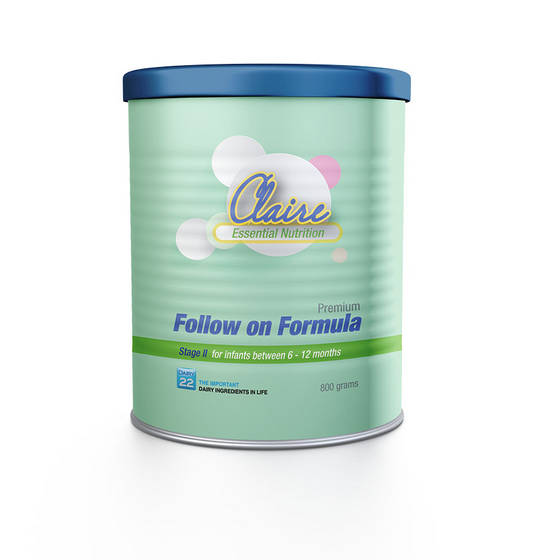 In special chambers, the packages are evacuated, nitrogen is supplied, after which the packages are hermetically sealed.
In special chambers, the packages are evacuated, nitrogen is supplied, after which the packages are hermetically sealed.
The storage conditions for all dry baby and dietary foods are the same. It is recommended to store them at a temperature of 1-10 ° C and a relative humidity of no more than 75%. The shelf life of the dry formula "Malyutka" is no more than 10 months, the dry milk formula "Baby" is no more than 8 months.
Powdered milk formula "Detolact". The main physical and chemical indicators normalized by the standard are given in table. 7.5. In addition to them, the solubility of not more than 0.3 cm 3 of the raw precipitate and the pH in the reduced form of 6.65-6.85 are controlled. The organoleptic characteristics of the product are determined after reconstitution.
A special feature of Detolact production is that it is produced from skimmed milk with the addition of corn or coconut oils, lactose, sucrose, minerals and vitamins, and emulsifiers. All components are mixed until thickened, concentrated in vacuum apparatus, dried and packaged under aseptic conditions. Thanks to this technology, the dry mixture "Detolact" has a high resistance up to 18 months, contains a minimum bacterial contamination. When used, heat treatment of the reconstituted mixture is optional.
All components are mixed until thickened, concentrated in vacuum apparatus, dried and packaged under aseptic conditions. Thanks to this technology, the dry mixture "Detolact" has a high resistance up to 18 months, contains a minimum bacterial contamination. When used, heat treatment of the reconstituted mixture is optional.
Dry milk mixtures "Vitalakt" and "Ladushka". Powdered milk formulas "Malyutka" and "Baby" do not fully meet the requirements for dairy products intended for children of the first year of life. The adaptation of these mixtures was carried out mainly by changing the composition of cow's milk, the carbohydrate composition remained practically unchanged.
"Vitalakt" and "Ladushka" are adapted milk mixtures (replacers of women's milk). Protein components are adapted by introducing whey proteins to a ratio of casein and whey proteins close to human milk, where it is 40:60. This increases the biological value of the product, digestibility. In adapted mixtures, the mass fraction of calcium is reduced, which contributes to the utilization of mineral ingredients. Carbohydrate ingredients are adapted by adding oligosaccharides (dextrin-maltose), which ennobles the intestinal microflora of the child.
Carbohydrate ingredients are adapted by adding oligosaccharides (dextrin-maltose), which ennobles the intestinal microflora of the child.
In the production of dry formula "Vitalakt", sunflower oil, vitamins A and D 2 , dextrin-maltose are added to the milk mixture. Dry milk whey (humanizing additive SHD-2), beet sugar, vitamin C are added to the obtained dry milk base. After that, the components are mixed in mixers.
Adapted dry mix "Ladushka" differs from "Vitalact" in the ratio of casein and whey proteins, which is 50:50.
Powdered milk "Vitalakt" is stored for 8 months, "Ladushka" - 6 months.
Powdered milk formulas for dietary nutrition. These include powdered low-lactose milk formulas, powdered milk formulas "Enpita".
Powdered low-lactose formulas are intended for dietary nutrition of children with galactosemia, primary or secondary lactose intolerance. These are low-lactose mixtures with malt extract, with rice flour, buckwheat or oatmeal, low-lactose milk.





